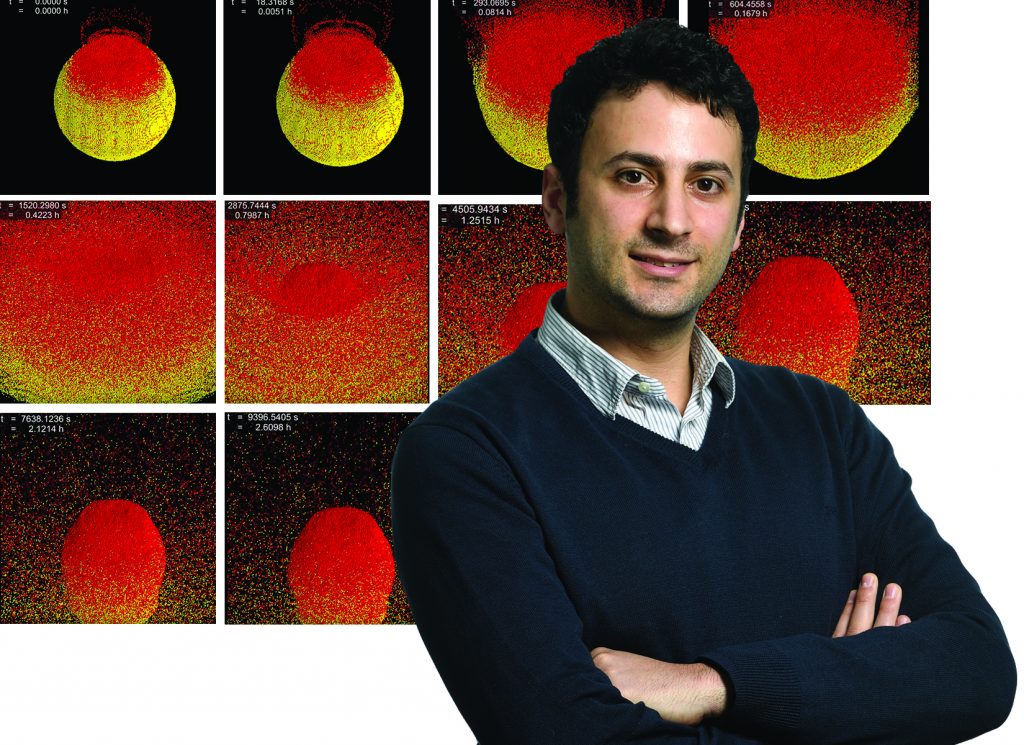
Space is sprinkled with the rocky detritus known as asteroids. In our own solar system, tens of thousands of these stone masses are clustered in the asteroid belt that lies between Mars and Jupiter.
Asteroids represent both danger and promise, explains Charles El Mir, a PhD candidate in the laboratory of K.T. Ramesh, director of the Hopkins Extreme Materials Institute and the Alonzo G. Decker Jr. Chair of Science and Engineering at Johns Hopkins. Having one headed toward our planet might seem the stuff of movie drama, but that is actually a plausible scenario that scientists are actively preparing for. In addition, as humans explore deeper into space, asteroids could harbor key resources—such as water—that could potentially be extracted. Drilling into their interiors could help space explorers avoid having to pack everything for a long spaceflight.
Both of these circumstances will require researchers to have a better understanding of asteroids, particularly their varied structures, El Mir says. Knowing whether an asteroid is a giant hunk of rock or a floating gravel pile—or a mix of the two—will make a big difference in strategies that researchers might devise to prevent one from striking Earth or to drill inside.
To help decipher asteroids’ architectures, El Mir’s research focuses on learning more about both length and time scales.
“Some asteroids are hundreds of kilometers across, and their structure might change over thousands of years or at the moment of impact. We’re trying to figure out something you could never replicate in a lab. That’s why my lab is our big computational cluster, a group of computers working together,” he says, referring to the Maryland Advanced Research Computing Center, jointly operated by Johns Hopkins University and the University of Maryland, College Park.
Using MARCC, El Mir has spent part of his efforts studying thermal fatigue, the stress that repeated fluctuations in temperature put on an object. Because asteroids have a period of rotation that lasts for just a few hours, they’re turning toward and away from the sun in relatively quick succession, heating and cooling their surfaces. The expansion and contraction caused by these temperature changes could make them break down over time.
He’s devoted another part of his studies to what happens in the hours after a large impact, modeling how material might be expelled but still interact with the asteroid’s gravitational field.
El Mir, whose work is funded by NASA’s Solar System Exploration Research Virtual Institute, hopes to continue researching topics far from Earth-bound as he continues in his career. “We’re still at the very early stages of space exploration,” he says. “I feel that there’s no better challenge than outer space. I want to keep exploring.”




